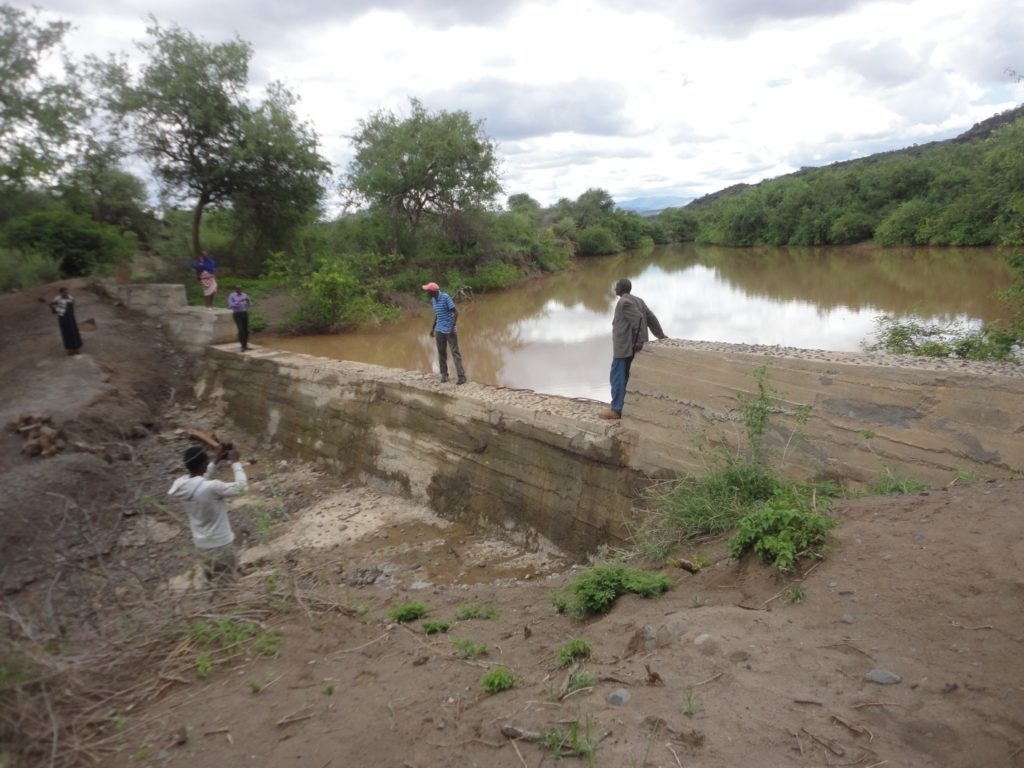
Water Security Flows Into Food Security
During a severe 2014 drought, a neighboring community and its 10,000 head of cattle survived because of sand dams, the only source of water. So, when the 15 members of a self-help group in FRB’s Kenya Ngong Intashat program decided it was time to build one, they were able to recruit their entire community to pitch in.
These concrete structures, built across sandy areas along seasonal rivers, capture and hold water and sand from flash floods. As the raging waters slam into the dam, sand carried by the water sinks, and water collects in the sand in the hole dug for the purpose. More water is held in a pond on the other side of the wall, and used throughout the year for household needs, agriculture, and livestock. When a drought hits and the pond is dry, water that’s been stored in the sand away from dirt and insects can be reached by digging.
The dam in Kajiado County was inaugurated in April, and the community received instruction on its care and efficient use. Because maintenance is in the hands of the residents, they know it’s up to them to keep it in good order. They’ll be building a fence to keep livestock out, and directing water to collection points below the dam for cattle to drink.
This community has started a small vegetable garden near the dam site, planting kales, spinach and onions. Because most people’s experience and livelihoods are based on cattle, they receive training from MIDI, the local partner, on keeping bees, tending kitchen gardens, and creating small-business activities. Self-help groups are also learning dryland farming techniques to diversify their food sources and protect themselves from total crop failures.
Kenya Ngong Intashat program
Led by Mennonite Central Committee and local partner MIDI
10 communities, 4,500 households, 31,500 individuals
